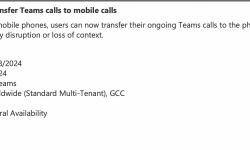"We don't need SharePoint because we already have Teams and OneDrive," I've been hearing a lot recently. The claim is on par with the "Earth is flat" argument in terms of believability. So, if you're not sure whether or not you need SharePoint and have reservations about it, you should read this post.
Let's start with a quick overview of SharePoint's history. SharePoint is a Microsoft product that has been around for almost two decades. It is a web-based program that has traditionally been used by businesses to work internally. SharePoint's primary concept is that it serves as a one-stop shop for whatever material that an organization may have – documents, news, links, events, lists, and so on. SharePoint has developed significantly since its initial release in 2001. The most significant modification came in 2011, when it was incorporated into an Office 365 (now Microsoft 365) suite and migrated from on-premises to cloud. That event set in motion a series of developments that have continued to this day. The modernisation of information architecture and look and feel, which occurred few years ago, was also one of the significant improvements.
Management of Documents
One of SharePoint's most important features is document management. It offers various DMS-specific capabilities that you may set and utilize, in addition to cloud storage for your files and folders: Check-in/Check-out, and metadata are all part of the version history.
Intranet
Another prominent use case for SharePoint is its capacity to be utilized as an intranet hub/portal/wiki within the enterprise, which has made significant development since SharePoint modernisation a few years ago. It's a reasonable and practical choice for a company-wide Intranet portal because of the ease with which pages can be edited and the variety of accessible and aesthetically attractive layouts.
Lists
Lists have always existed in SharePoint. It's easy to forget that lists exist and remain on a SharePoint site, inheriting its security and information, thanks to the latest release of the lists app. As a result, when you utilize lists, you're actually utilizing... SharePoint.
Integration of Teams
Microsoft Teams has become synonymous with working from home and collaborating with others. Having said that, most users are still unaware that Teams is built on top of SharePoint. When you post files to a Team's channel, they are automatically uploaded to a SharePoint site. When you ask someone to join your team, they automatically join the SharePoint site connected with it. A new SharePoint site is created every time you create a Private channel. To cut a long story short, Teams cannot exist without SharePoint. You utilize SharePoint when you use Teams.
Powerful Integration Automation
SharePoint's interaction with Power Automate is, of course, another application case. You may quickly create a workflow to automate document approvals and other requests, with SharePoint serving as the content store.
SHAREPOINT VS. ONEDRIVE
Another common misunderstanding about SharePoint is how it differs from OneDrive. If you think about it, OneDrive is the user's private SharePoint site. I've created a separate piece on it. While the document management features of OneDrive and SharePoint are comparable, they have distinct access and use cases. If your company has more than one employee, switching to OneDrive instead of SharePoint is a bad idea.









